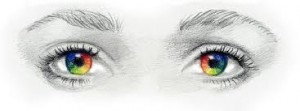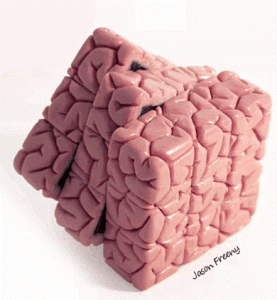Some characteristics are biological and universal: we all have them in some value e.g. ethnicity, belief of non-belief, sexual orientation and age.
In talking about characteristics in this way we must remember the problems of language. All labels for characteristics are social constructs. When the Equality Act references Disability as a characteristic it is not saying that it is a characteristic we all share nor is does it assume disability stems only from genetics. The characteristic of disability stems from a social model. A person is only as disabled as to the degree of barriers society places in their way. But if you are not disabled by society you do not have that characteristic. So the charteristics that form identities can also be social constructs.
A woman may be temporarily blinded in a terrible accident. Her loss of sight then makes it very difficult to function in a society which has been built to cater for people who can see. She now finds herself disadvantaged because she cannot negotiate certain streets, certain buildings etc.
If there were no tools made for left handed people, they might identify as disabled. (Even so the left handedness is a characteristic and it can influence parts of your identity). The temporarily blinded woman now experiences an added characteristic (YouCube colour) to her sense of self, and the disablism she experiences (YouCube rotation) alters her sense of self, and creates a new identity (YouCube face).
She is also a lesbian. How will this impact on her relationships or the women she meets, or even the fact that she can longer access social amenities. More rotations occur because of the intersection of her sexual orientation with her disability. She was always proud of her sexual orientation and opportunities it afforded in her social life. Now, with a disability she may find herself isolated.
There are no characteristics that are problematic in themselves, but it is the interactions of the identities they create which can lead to conflict and oppression within and between individuals. This is what the Equality act defines as combined characteristics and it recognises for the first time in law that discrimination based on characteristics is ‘stackable’.  A disabled lesbian has a unique, more widespread experience of prejudice because she has a combination of characteristics which illicit discrimination. The disablism she experiences is different to that of a blind straight woman, and the homophobia she experiences is different to that of a sighted lesbian. It is the combination of disablism and homophobia which presents unique challenges.
A disabled lesbian has a unique, more widespread experience of prejudice because she has a combination of characteristics which illicit discrimination. The disablism she experiences is different to that of a blind straight woman, and the homophobia she experiences is different to that of a sighted lesbian. It is the combination of disablism and homophobia which presents unique challenges.
It is the understanding of the interplay of characteristics and the identities they form that enable us to legislate, react and be proactive around prejudice and discrimination.
When she regains her sight, the woman does not suddenly go back to her original identities. How might her knowledge of disablism change her responses to any future experiences? Her YouCube changes forever.









